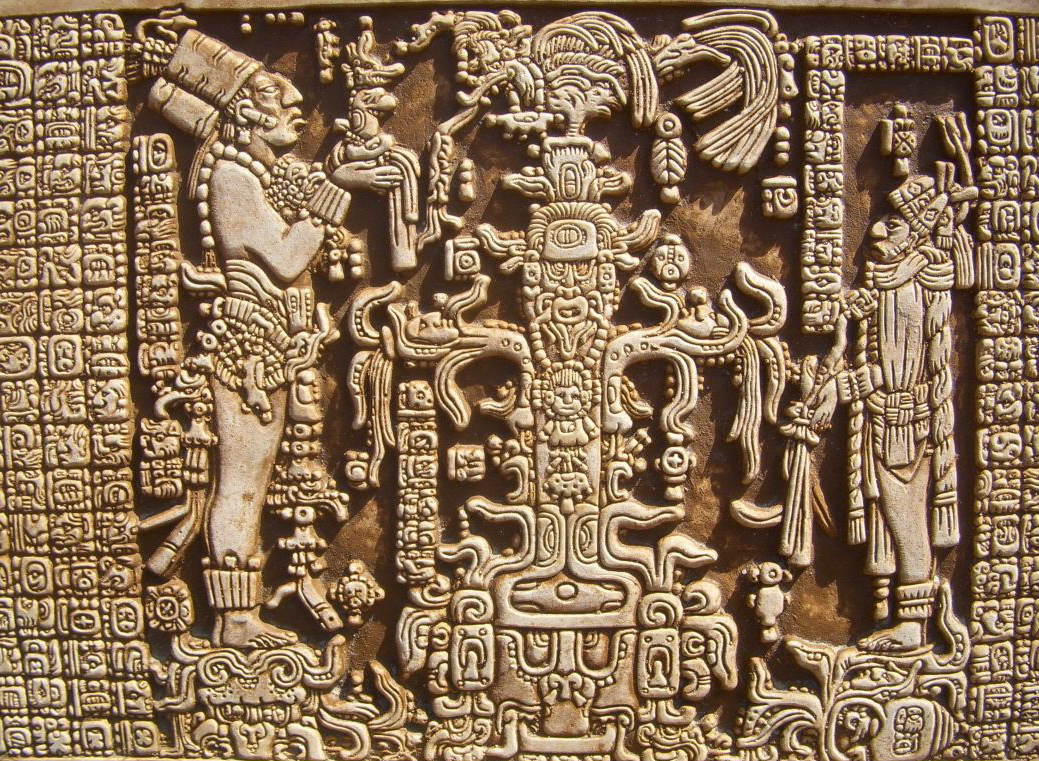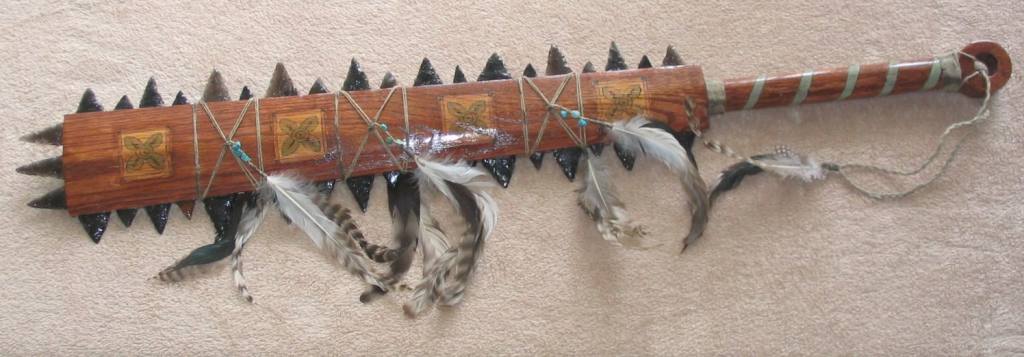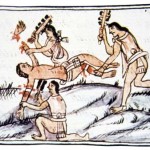“ALMA….DID JUDGE RIGHTEOUS JUDGMENTS”
Mosiah 29:1-36 Mosiah2 writes against Kingship
29:5-33 What would be the purpose of Mormon inserting a primary document at this point? Is it because of this line? “And if the time comes that the voice of the people doth choose iniquity, then is the time that the judgments of God will come upon you…” (vs. 27)
Compare 29:15 “Law which has been given to us by our fathers.” with 29:22 “He teareth up the laws of those who have reigned in righteousness before him.”
Compare 29:9 “..which would also cause him …to commit much sin.” with 29:30 “..they shall be answered upon their own heads.” 29:31 “..answered upon the heads of their kings.” It sounds as if Mosiah2 is concerned about keeping his blood-line righteouss. He does refer back to the blood line of Zeniff in 29:18 for a comparison.
29:32 The word “land” appears to be in the context of something larger than just King Mosiah2‘s Kingdom. Is he comparing his kingdom to the other kingdoms in the vicinity?
Mosiah 29:37-47 Transition to Government by Judges; Alma2 Is the 1st Chief Judge
29:42 Even though the judges were selected by the people, here we are getting a benevolent theocracy.
29:45-46 “Does it make a difference in their relationship that Alma is probably at least ten years older than the sons of Mosiah? This can be surmised from the fact that Alma’s father was born about 173 BC and Mosiah was born around 154BC. Alma Seems to have been the oldest son, or perhaps the only son. “ (Grant Hardy, Understanding the Book of Mormon, pg 309 note 29)
29:47 Did Mosiah2 have priesthood, but no organization existed until Alma1 comes onto the scene? Does that mean that priesthood can exist without the institution of church? That is the argument that many Mormon polygamists make – that they have priesthood, but the church is in apostasy.
THE BOOK OF ALMA, THE SON OF ALMA
Mormon’s Abridgment of the Record of Alma2 : Alma 1:1-44:24
Nehor, an Anti-Christ: Alma1:1-15
1:1 What does Mormon mean that the laws were “acknowledged by the people”?
1:12,13 Why does Alma2 list priestcraft as the primary sin, followed murder?
1:15 Why was Nehor put to death? Murder or priestcraft?
Troubles for the Church: Alma: 1:16-24
1:16, 17 If Nehor was executed for priestcraft, why were they not concerned about being condemned for priestcraft? Instead, they are concerned with lying and stealing. This lends to the idea that Nehor was executed for murder – even though Mormon and Alma2 emphasize his priestcraft.
The phrase “false doctrines” appears only here in Alma and in 2 Nephi.
Peace Restored: Alma 1:25-33
Compare 1:27 with 1:29, 30 Costly apparel is equated with unrighteousness while wealth as represented in grain, gold, etc. is equated with righteousness.
THE AMLICITE REBELLION: ALMA 2:1-3:39
Amlici’s Unsuccessful Attempt to Be Elected King: Alma: 2:1-7
The Book of Alma divides fairly neatly into seven sections: Amlicite Rebellion (Alma 2:1-3:19), the Nephite Reformaion (4:6-16:21), the Missionary Journeys of the Sons of Mosiah (17:5-27:15), the Mission to the Zoramites (31:1-35:14), Alma’s Tesitomony to his Sons (35:15-42:31), The Zoramite War (43:1-44:24), and the Amalickiahite Wars (46:1-62:41). These lengthy, coherent, fairly discrete narrative blocks represent a rather advanced style of storytelling, one that is cognizant of readers’ needs for interconnections, explanations, and followabiltiy, and in addition incorporates several sources.
2:4 “…for it was his intent to destroy the church of God.” How does Mormon know the intentions of Amlici? Was there something in the original Large Plates that would lead him to think that?
Amlici and His Followers Battle the Nephites: Alma 2:8 -19
2:11 “..the remainder were called Nephits, or the people of God.” Here “Nephite” is not used in a racial sense, but more in a religious sense. This might explain Mormon’s comment regarding the intention of Amlici in vs. 4. What about those in vs. 3 that were not of the church? Were they considered Nephites as well?
2:12 “..swords, and with cimeters..” What is the difference between the two?
When the Spanish conquistadors faced Mesoamerican armies in the early sixteenth century, without hesitation they called the most fearsome
type of native weapon espada, “sword.” The Aztec name was macuahuitl (pronounced “mah-kwah-weetl”) or macana. When the indomitable Bernal DÃaz, one of Cortez’s companions in his conquest of central Mexico, saw the macuahuitl at work in the hands of the enemy, he reported that “their swords, which were as long as broadswords, were made of flint which cut worse [i.e., more sharply] than a knife, and the blades were so set that one could neither break them nor pull them out.” (Bernal DÃaz del Castillo, The Conquest of New Spain, tr. J. M. Cohen (New York: Penguin Books, 1963), 142—43)
A macuahuitl consisted of a long, flat piece of hardwood with grooves along the side into which were set and glued sharp fragments of flint or obsidian (volcanic glass). Several inches of the wood piece were usually left as a handgrip at the bottom, the rest of the instrument having a continuous sharp serrated edge; others had spaces between the blades that resulted in a serrated edge. While most of these weapons were blunt at the top, some were tipped with a sharp stone. (http://maxwellinstitute.byu.edu/publications/jbms/?vol=8&num=1&id=182#Anchor-2.%20Be-57077)
2:19 “twelve thousand five hundred thirty and two souls; ..six thousand five hundred sixty and two souls.” Could this be a bit of hyperbole?
The Nephites Defeat the Amlicites: Alma 2:20 -3:19
2:20 Was it called the Valley of Gideon during Alma2‘s reign or was it called that later?
2:30,31 Almas request was apparently granted in Alma 35:14.
2:34 “River Sidon” is the only river mentioned in the Book of Mormon.
3:13-16 So the red mark upon the head of the Amlicites is to be equated with the dark skin of the Lamanites? It seems that Mormon is stretching things a bit here.
The prophecy in 2 Nephi 5:22,23 being fulfilled in Alma 3:13-18 provides connections between larger episodes and between books.
3:8, 11 Belief in the correct traditions of the Nephites seems to have been the most important criteria in deciding who was or was not a Nephite (apparently this acceptance of tradition was of more significance than actual lineage), but only Zeniff goes to the trouble of specifying exactly what the traditions of the Lamanites” were (Mosiah 10:11-18).
3:19 Editorial interuption by Mormon that Dr. Grant Hardy calls an “explanatory detail”.
4:10 “The wickedness of the church….church began to fail in its progress.” As members of the LDS faith, this warning should be something that we take to heart and use to examine ourselves.
4;13 “..imparting their substance to the poor.. retaining a remission of sins.” Mosiah 4:12, 26 “..impart of your substance to the poor.. retaining a remission of sins.” It seems that Mormon wants to give his readers an opportunity to experience the full power of King Benjamin’s words, so that they too might have an opportunity to covenant to accept Christ. We see here what appears to be a deliberate verbal parallel.
4:16 “He selected a wise man…and gave him power according to the voice of the people..” This is a weird way to put things. Was Nephihah elected or was he appointed?
There is an abundance of specific narrative repetition in Mormon’s abridgment which suggests not only deliberate selection and shaping but also that, in the working out of God’s will, certain kinds of events are likely to recur. An example would be two cases where chief judges give up their offices to devote themselves to preaching (Alma 4 & Helaman 5). In light of Mormon’s artistic structuring of his account with deliberate parallel narratives, Latter-day Saints may want to rethink their long-held assumption that the circumstances of Mormon’s life forced him to write hurriedly.









I like the contrast between the graphic image of an actual historic Mayan scene depicted on the tablet and an account of a purported past event that has, as of yet, no proven support outside of itself. It’s import to keep this contrast in mind and consider the implications thereof.
I like that tablet a lot. I asked Cathy to buy me a replica of it a few years ago; I am still waiting. There is an even cooler engraving on the lid to a sarcophagus in the same temple complex in Palenque. In Michael Coe’s book “The Maya”, he tells a very cool story of how the sarcophagus was discovered; it was very Indiana Jones-isc. I’ll post a picture of it on the next Book of Mormon lesson.
What implications do you see regarding such artifacts and the Book of Mormon?
Unfortunately, I see little connection between these artifacts and the Book of Mormon. To me the artifacts show or describe an ancient Mesoamerican civilization that developed from the indigenous peoples (Asians) who migrated to the Americas via the Bering Strait land bridge 10,000 to 14,000 years ago. After all the years, there is no significant linguistic, anthropological, archaeological, or DNA evidence that ties these peoples either to the Book of Mormon or any or all of the Ten tribes. (By the way, I bought Coe’s books: Maya and Mexico.)
I agree. I don’t think we will ever find any strong archeological evidence for the Book of Mormon. I do find value however in using Mesoamerican archeology to inform my Book of Mormon studies.
I don’t know if you and Tanya get Netflix or not. If you do, there is a great documentary called “Breaking the Mayan Code” that looks at how some of the Maya glifs were translated. Paul has my account password for the live stream videos and “the Mayan Code” is available as a live stream. Next time you come up to Provo, you should watch it; there is lots of Michael Coe in it
Yes, I have Netflix. I’ll look for it there. And now a quote from Simon G Southerton’s book: Losing A Lost Tribe.
“Ten centuries ago a handful of Norse sailors slipped into Newfoundland, established small colonies, traded with local natives, then sailed back into the fog of history. In spite of the small scale of their settlements and the brevity of their stay, unequivocal evidence of their presence has been found, including metalwork, buildings, and Norse inscriptions. Just six centuries earlier, the Book of Mormon tells us, a climatic battle between fair-skinned Nephites and dark-skinned Lamanites ended a millennial domination by a literate, Christian, Bronze Age civilization with a population numbering in the millions. Decades of serious and honest scholarship have failed to uncover credible evidence that these Book of Mormon civilizations ever existed. No semitic languages, no Israelites speaking these languages, no wheeled chariots or horses to pull them, no swords or steel to make them. They remain a great civilization vanished without a trace, the people along with their genes.” p. 199.
Brent,
For some reason I cannot reply to your last post. There are multiple problems with Southerton’s assessment of the archeological and historical difficulties with the Book of Mormon – specifically his assessment of the Native American DNA. I don’t think it is his fault. The church as an institution has taught for years certain views of the Book of Mormon that just aren’t sustainable. Interesting is that many of these views are generational. I taught a combined Laurel/Priest lesson on Mother’s Day. None of the teenagers believed the Americas were empty when Lehi landed.
Regarding the Norse sailors, that is an interesting perspective I will have to chew on for a while. How large were the populations of cities when the Norseman arrived?
We do have lots of evidence that Meso-America was peopled way before 600BC. There were at least two areas along the Southern Mexico/Central American Coast that had cities of 10,000 people or more. I would not suspect to find any archeological evidence in the New World of a small group of Hebrews landing in Mesoamerica in the 7th century BC.
Horses pulling chariots? The Book of Mormon mentions horses, but doesn’t tell us what they do. Did they pull chariots? I don’t think the Book of Mormon is that explicit. Chariots with wheels? We know the wheel existed only on toys in Mesoamerica; there is no evidence they were used in carrying things. What did Joseph Smith mean when he had Oliver write down the word “chariot”? I have no idea. He might have meant chariots with wheels. He might have meant something different.
I reject how some apologists use “parallelamania” to try to support the historical claims of the Book of Mormon. None-the-less, I am also willing to suspend complete condemnation of the historical claims of the text. There are some valid archeological evidences of the Old World within the Book of Mormon, that Joseph would not have known about, to push the text back within the realm of possibly true. There are strong arguments for and against it as historical. By doing so, it allows us to freely make a decision about the historicity of the text.
Because of these difficulties, some Mormons (although a few) have decided to view the Book of Mormon as “inspired fiction.” Could they be right? Perhaps.
“Because of these difficulties, some Mormons (although a few) have decided to view the Book of Mormon as ‘inspired fiction.’ Could they be right? Perhaps.”
For some it’s the only possible conclusion. B.H. Roberts mentioned this possibility.
I agree. I personally would rather have those people within my religious community as active participating members who both give and receive. Otherwise they would have to give up so much of the good Mormonism provides.
Brent, how much are you reading man? I thought I read a lot. Geez
Right now I’m reading : Sidney Rigdon, A Portrait of Religious Excess, because I want to learn more about Rigdon’s role in the early church. Very enlightening.
After you read that, tell me what you think. Who’s the author? Know what? You should do a book review for us after you read it and post it on our blog.
I want to read Teryl Given’s biography on Parley Pratt. So many books. So little time
In our gospel doctrine class priestcraft was defined as one that gets paid for their service. Which I thought was an interesting way to put it. The teacher went on to ask how do we defend CES teachers. I thought it was a valid question, but I sidetracked them when I told them the news that our GAs are paid. This caused a little bit of stir. I think people were ok with that, because they realize the demands of what a global corporation would take to run.
On the other hand… (which I wish I brought up) were people like: John Bytheway, Brad Wilcox, Paul H. Dunn and GAs who publish books as GAs. I think that is better question than the CES teacher question that was asked.
My biology and evolution professors referred to the religion department as the paid clergy of the church. Another aspect of priestcraft is those that do it for praise. How many people around us do service, their callings, etc. for praise? I think this aspect of priestcraft is very prevalent within our culture today.
Yes to Paul and Yes to Cody. Right on!
Ah Cody very nice. I think the difference is where your heart is set… gaining riches or just serving and here’s a little something something to take care of your needs.
I really think GAs case if they produce a book they shouldn’t take a profit. If they put their name on anything it will sell like crazy.
Long history of that. Prophet from your position. I mean profit.
An example of the two extremes as pointed out in Michael Quinn’s “Mormon Hierarchy” series: Joseph Fielding Smith kept all his profits from his writings. N. Eldon Tanner of the 1st Presidency gave all his book revenues away to charity.
Go Tanner!